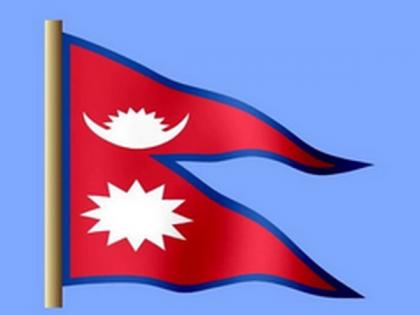Ghode Jatra: Nepal's festival of horses observed in Lalitpur
By ANI | Published: March 21, 2023 10:28 PM2023-03-21T22:28:50+5:302023-03-21T22:30:10+5:30
Lalitpur [Nepal], March 21 : Ghode Jatra, also known as the festival of horses, was observed in Nepal's ancient ...

Ghode Jatra: Nepal's festival of horses observed in Lalitpur
Lalitpur [Nepal], March 21 : Ghode Jatra, also known as the festival of horses, was observed in Nepal's ancient city of Lalitpur on Tuesday.
Astaman Maharjan became "Kaji Saheb" (the highest post awarded in the royal palace) for the second time this year. Maharjan rode a horse and toured the temples with bystanders clapping and cheering him on.
A tradition preserved for ages in Lalitpur, it is observed specifically on Ghode Jatra or the festival of horses.
"The Ghode Jatra is being observed from the Malla regime. On this day, a horse rides between Balkumari and Bhola Ganesh temple thrice. Lalitpur's Ghode Jatra is different from Kathmandu as a lone horse takes the round of the city. The yatra ends at Balkumari temple," Maharjan told .
Kaji Saheb, called "Ju-Ju" in Newa is a procession that is taken out annually in a bid to get a sense about the people and the situation they are in. This tradition of the King riding on a horse and taking to the street is believed to have started during Sri Nivas Malla (1620-1661) of Patan.
Beforehand, Kathmandu had the tradition of holding the annual horse festival, which is believed to have started by Pratap Malla (1624-1674). Pratap Malla started the festival to check on the status of his subjects.
King Sri Nivas Malla of Patan adopted the tradition in Patan as well to stop the locals from going to Kathmandu to see the procession. This festival, which has been in vogue, since the Malla regime (13th to 18th Century), has been preserved and continued to this day by Walkhu Chibah.
Members of the Guthi take turns to ride the horse and tour the city annually on Ghode Jatra, keeping this ancient tradition alive. Covering a distance of about one kilometre, the horse bearer or the Kaji Saheb is congratulated and regarded by members of the society.
The festivity, spans an hour, with horses jogging from one temple to another. The Kaji Saheb chew on a betel leaf, a ritual which formally marks the conclusion of the procession.
"Here (Lalitpur), it is different than Kathmandu because here a commoner rides the horse. In Kathmandu, the Army and high-ranking officials take part in the horse procession but here it is orgsed and conducted entirely by locals," Binod Raj Maharjan, one of the spectators, told .
In Kathmandu, the Nepal Army holds a horse parade in the Tundikhel ground or the Nepal Army Pavilion in presence of top dignitaries.
Nepal has special status and place for worshipping mals and birds. This festival of worshipping horses, called "Ghodejatra", is observed on the new moon of Chaitra Sukla Paksha of the eastern lunar calendar. According to the Gregorian calendar, it usually falls in mid-March or early April.
It is observed annually following the belief that its observation started as a celebration of the victory over a demon named Gurumapa (also called Tundi) in ancient times. He used to terrorise people in the Kathmandu valley, inflicting misery, kidnapping children and devouring them.
The demon was finally trampled to death by horses and buried under a tree in the Tundikhel ground at the centre of Kathmandu. In order to stop his spirits from coming back into the ground, the king started the ritual of galloping over the field. This tradition then was performed every year on Chaitra Krishna Aunsi and came to be known as Ghode Jatra.
Disclaimer: This post has been auto-published from an agency feed without any modifications to the text and has not been reviewed by an editor
Open in app